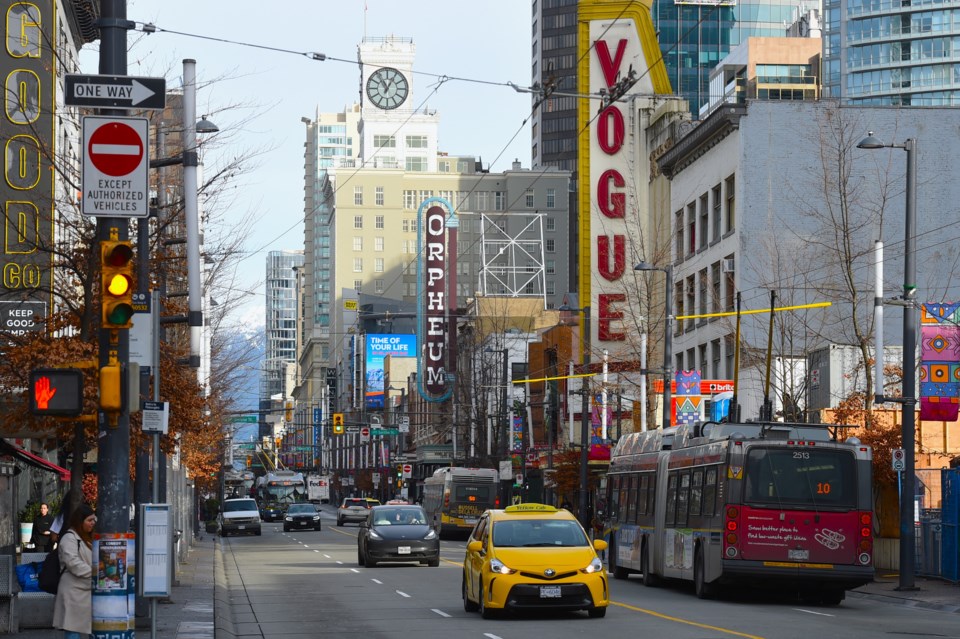Â鶹´«Ã½Ó³»has had plenty of moments or places worth remembering, with markers of some kind celebrating or commemorating past triumphs, failures, or tragedies.
Sometimes, if the moment or place is notable enough, it will get some sort of sign marking its significance.
It's not surprising, then, that places like Lions Gate Bridge, Canada Place, or Chinatown have such indicators.
But there may be some historic markers that surprise you.
1. Jack Benny's teen wife
Fans of old Hollywood entertainers will know the name Jack Benny; he was a big name for decades on radio and the early days of TV, up until the 1970s.
His wife, Mary Livinstone, was a part of his acts occasionally and reportedly a talented comedian in her own right.
She grew up in Vancouver, and, in 1922, according to a plaque at East Hastings Street and Jackson Avenue, she met Benny at her family home, where a sign marks their meeting.
He hadn't made it big yet and, at 28, was touring North America.
She was still in school at the time, as she was 13.
They didn't start going out right away; they dated in 1926 when she was 17 and married the next year.
2. The 2006 windstorm
To many the 2006 windstorm may seem a bit too recent to have a historical plaque, and to be fair, it's not really a plaque.
It's a whole monument.
It's in a place where tourists are perhaps more likely to see it than locals, at the Prospect Point lookout.
Created in 2008, it marks the fact Stanley Park lost 10,000 trees during the December storm.
"This site represents a thank you to all those who responded to the disaster in such a generous fashion," reads part of the sign, along with a list of names of those who donated to the restoration of the park.
3. Â鶹´«Ã½Ó³»gets mail
Before Â鶹´«Ã½Ó³»was officially incorporated, one service was in place.
The first mail deliveries happened on Feb. 1, 1885, according to a plaque at the corner of Nelson and Howe streets.
"Citizens were instructed regarding proper numbering and servicing began February 1, 1895," reads the sign.
4. The (nearly forgotten) Stanley Park Rock Garden
The Stanley Park Rock Garden was one of the great sights to see at the park 110 years ago. Created by John Montgomery, it was made using boulders left over from other park projects, and mixed in plants that worked well in rocky areas.
It was actually the first public garden in Vancouver.
However, given the amount of upkeep it needed to keep it attractive, it was neglected by the late 1940s.
Fast forward to the 2006 windstorm, and some of those fallen trees allowed the garden to be partially revealed; around the same time, the grandson of Montgomery was researching family history.
The garden has now been marked as a historic site.
5. Manzo Nagano
Manzo Nagano may not be one of the biggest names in Canadian history, but he played a notable role.
He was the first Japanese immigrant to officially arrive in Canada.
A steamship brought him across the Pacific in 1877.
"He fished near Rivers Inlet and eventually settled in Victoria, where he ran a number of businesses, a hotel for Japanese migrants, a Japanese curio shop as well as one that sold supplies to prospectors headed to the Klondike," reads a sign commemorating Nagano.
It's located in the gardens at City Hall.



